Thai food is known for its unique combination of flavors and spices. From the subtle sweetness of coconut milk to the spicy heat of chilies, Thai cuisine has something for everyone.
But what exactly are some of the Thai spices used in popular dishes? Let’s look at some commonly used ingredients that make up this delicious cuisine!
We’ll explore everything from star anise to lemongrass and see how they help create mouthwatering dishes like Pad Thai and Tom Yum soup. So grab your chopsticks and your best electric wok, and join us on a journey through the flavorful world of Thai cooking and Thai spices.
10 Must-Have Thai Spices
What are some herbs for Thai food? Whether you are making Pad See Ew vs Pad Thai, these 10 ideas will get you started! You’ll need to stock up on these 10 Thai spices before you make your next meal!
Galangal (Must Have On the List of Thai Spices)

Galangal is one of those ginger-like Thai spices used in thai cooking. Its root looks similar to ginger but has a distinct flavor you will want to take advantage of. Its skin is a little smoother than ginger, and the vegetable under the skin can range from pink to light yellow.
Learn how to mince ginger; you can use Galangal in any Thai dish that calls for it.
Galangal is commonly used in all kinds of Thai cuisine and adds a unique kick to dishes like Tom Kha Gai (coconut soup with chicken) and Gaeng Keow Wan (green curry).
The flavor is slightly spicy, citrusy, and earthy all at once. If you’re a fan of Thai food or love experimenting with new flavors, I highly recommend giving Galangal a try in your next dish!
Lemongrass (Thai Herb)
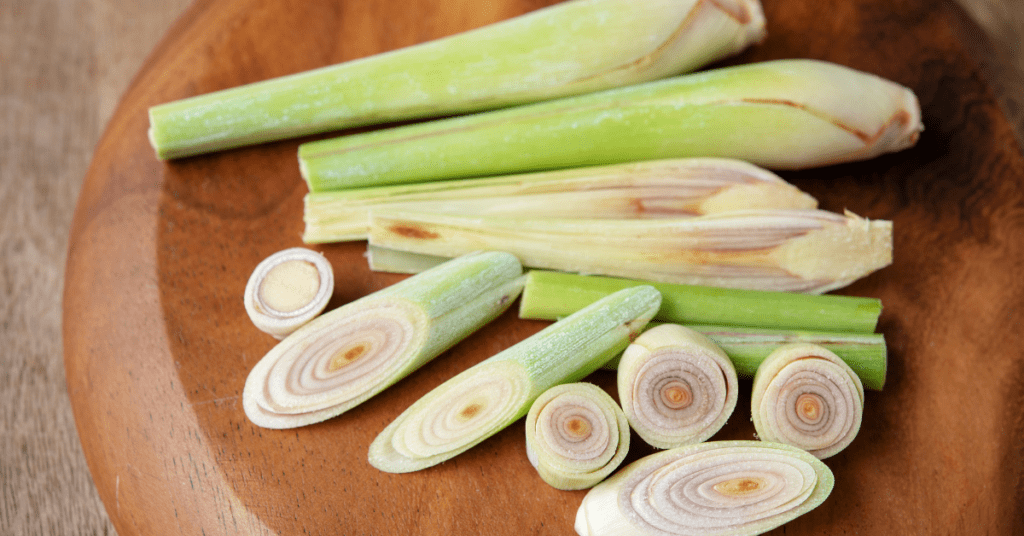
Lemongrass is a fragrant popular Thai herb commonly used in Thai cooking. It has a subtle citrus flavor with a hint of ginger, adding a refreshing kick to many dishes.
You’ll find this Thai spice in soups like Tom Yum Goong (spicy shrimp soup) and curries like Panang Curry. It’s also great for marinating tofu or adding stir-fries for extra flavor.
I love to add some lemongrass powder to my rice. I’ll usually stir in a few tablespoons after the rice is done; it will give your entire dish a unique depth of flavor! If you want to add some zing to your next meal, try lemongrass!
Kaffir lime leaves and Lime Rind
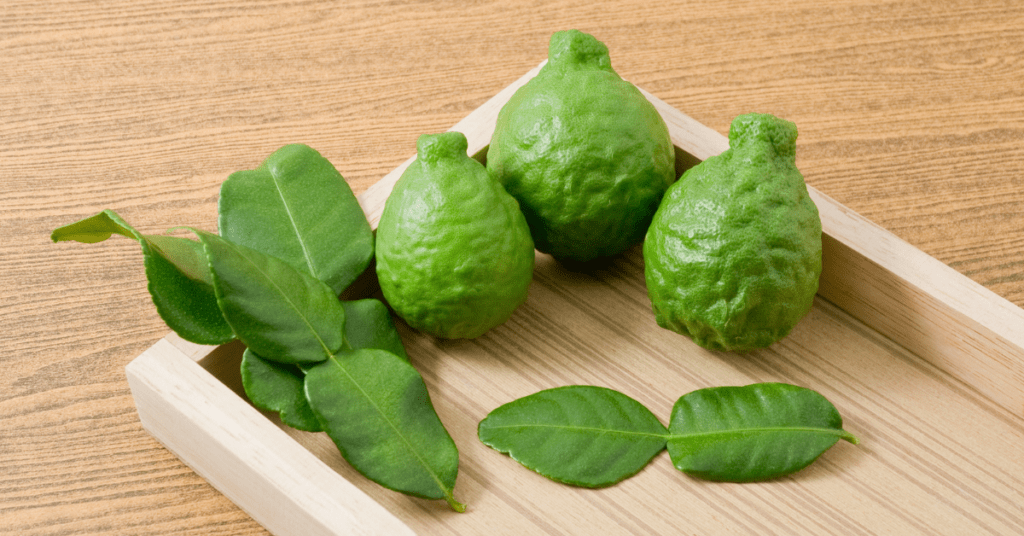
Kaffir lime is a citrus fruit that’s a must for Thai cuisine. Not only does Thai cooking use the leaves and rind of limes, but it also uses lime juice! It has a unique flavor that’s both tangy and slightly bitter, with a hint of sweetness.
If you’re looking to add some zesty flavor to your next meal, kaffir lime is worth trying out! You can use the leaves in curries like Green Curry and Panang Curry to add depth of flavor while adding the juice in dishes like Tom Yum Soup for a refreshing twist. Kaffir lime is also great for making marinades or salad dressings.
Coriander Seeds (Thai Herbs)
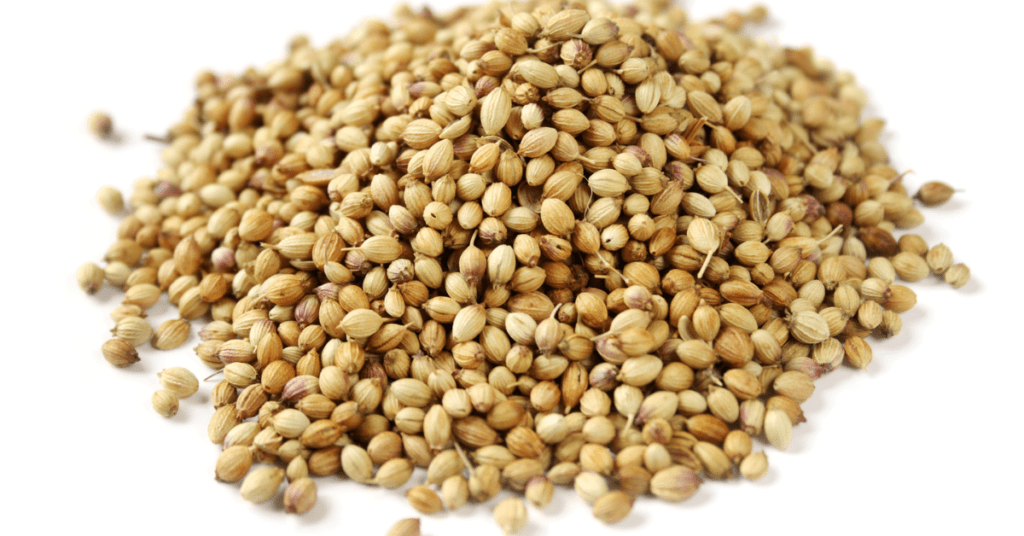
As someone who loves Thai cuisine, I can tell you that coriander seeds are common Thai herbs in many dishes. They have a slightly sweet, nutty, and citrusy flavor with hints of warm spice, making them a great addition to curries and soups.
You’ll often find them ground up and mixed with other spices like cumin and turmeric to make curry powder. So if you’re looking to explore the world of Thai cooking, don’t hesitate to give coriander seeds a try!
Cumin Seeds
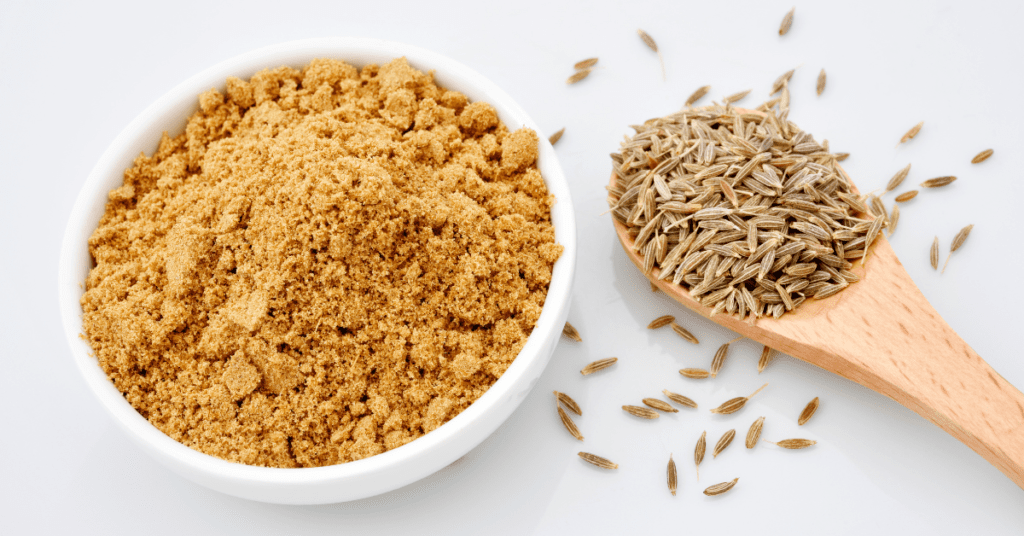
Cumin seeds are an essential part of Thai cuisine. For example, when making a green curry paste from scratch, you must use cumin seeds and the usual suspects, like lemongrass and Galangal.
You can use a spice grinder substitute to get the job done! Grinding up the cumin seeds will give the best result. The result will be a fragrant and flavorful paste with a subtle hint of warmth and spice.
Combining cumin seeds with other ingredients like fish sauce and lime juice creates a deliciously savory and tangy flavor profile. It pairs perfectly with sticky rice and fresh Thai herbs.
Curry Powder

Thai curry powder is a blend of various spices that combine to create the distinct and complex flavors of Thai curries. While the exact recipe may vary depending on who you ask, some common ingredients include coriander, cumin, turmeric, ginger, Galangal, garlic, and chili peppers.
These spices are carefully balanced to create a harmonious flavor profile ranging from mild and sweet to spicy and savory. Whether you’re making a classic green curry or trying out something new, like yellow or red curry, Thai curry powder is an essential ingredient that adds depth and complexity to any dish.
Turmeric Powder

Turmeric powder is a staple ingredient in Thai cooking, adding a vibrant yellow color and a unique depth of flavor to dishes. Its warm and slightly bitter taste pairs perfectly with other Thai spices like cumin, coriander, and ginger.
But turmeric isn’t just delicious – it’s also packed with health benefits recognized for centuries in traditional Thai medicine. From reducing inflammation to improving digestion, turmeric has been used by Thai healers for generations.
So the next time you’re whipping up a batch of green curry or pad thai, remember to sprinkle in some turmeric powder for its culinary and medicinal properties!
Star Anise (Thai Spices)
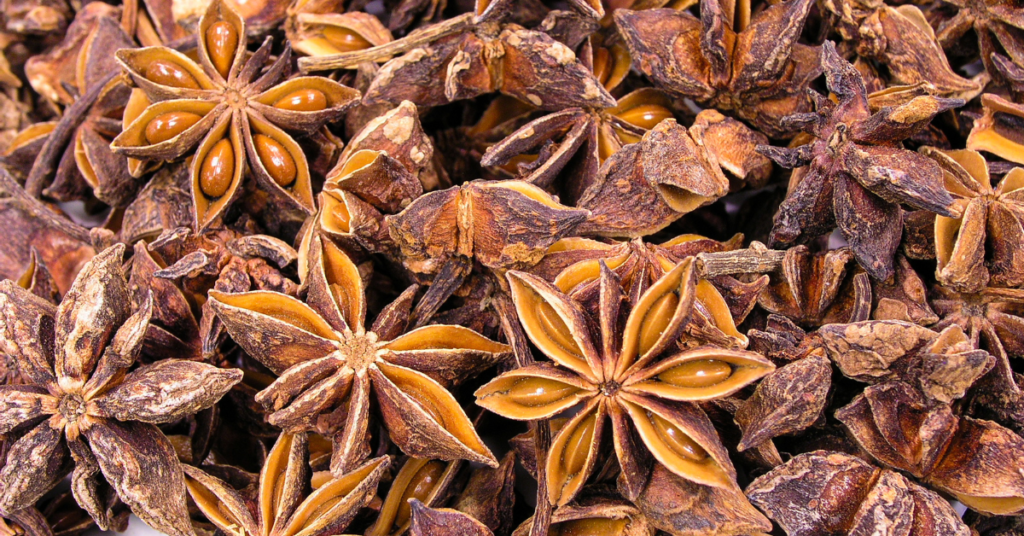
Star anise is a beautiful and fragrant spice commonly used in Thai cooking. It gets its name from its star-shaped pods, which contain tiny, brown seeds responsible for the spice’s unique flavor.
More importantly, star anise has a light licorice taste with subtle hints of sweetness and spiciness. Plus, it is a popular ingredient in many Thai dishes, like soups, curries, and marinades.
Two of the most famous Thai dishes to feature star anise are Khao Kha Moo & Massaman curry. The Massaman curry is a rich and creamy dish that blends spices like lemongrass, cardamom, red curry paste, turmeric, and star anise with tender chunks of meat or vegetables. But no matter how you use it, star anise adds a complex and aromatic layer of flavor to any dish it graces.
SO whether you make drunken noodles or pad Thai, you’ll want some of these spices on hand!
Thai Basil (Thai Herbs)
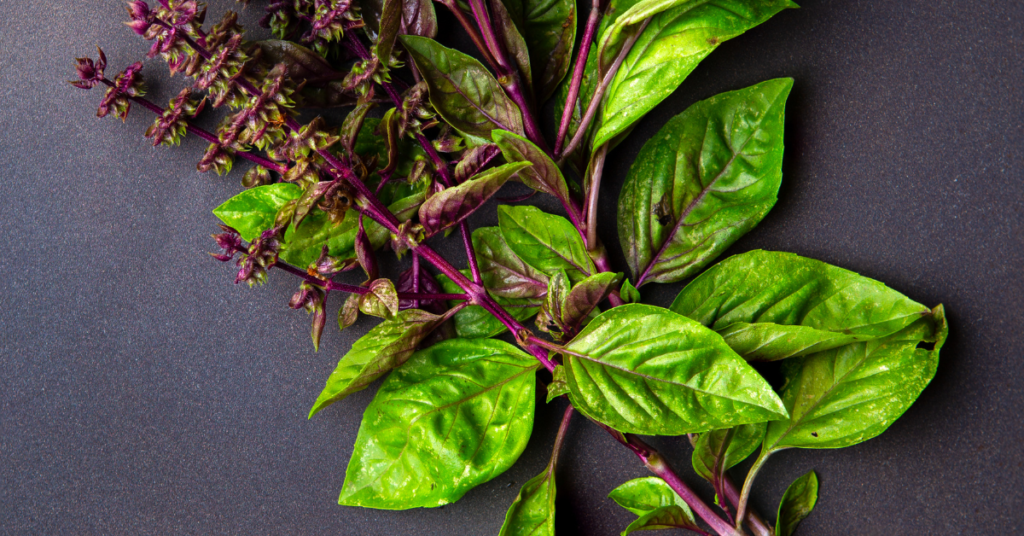
Oh, Thai Basil – how I love thee! As a herb with a unique anise-like flavor and a subtle hint of spice, Thai Basil is one of my absolute favorite ingredients in Thai cuisine.
It’s commonly used in dishes like basil saute, Pad Krapow Gai (spicy basil chicken), and Tom Yum soup to add a fresh and aromatic element to the plate.
But what really sets it apart from other types of basil is its ability to hold up to heat without losing its flavor or texture. Whether I’m sautéing it with garlic and chili peppers or using it as a garnish for my favorite curry, Thai Basil always adds a burst of brightness and complexity that takes any dish to the next level.
Chilies (Thai Food Spice)
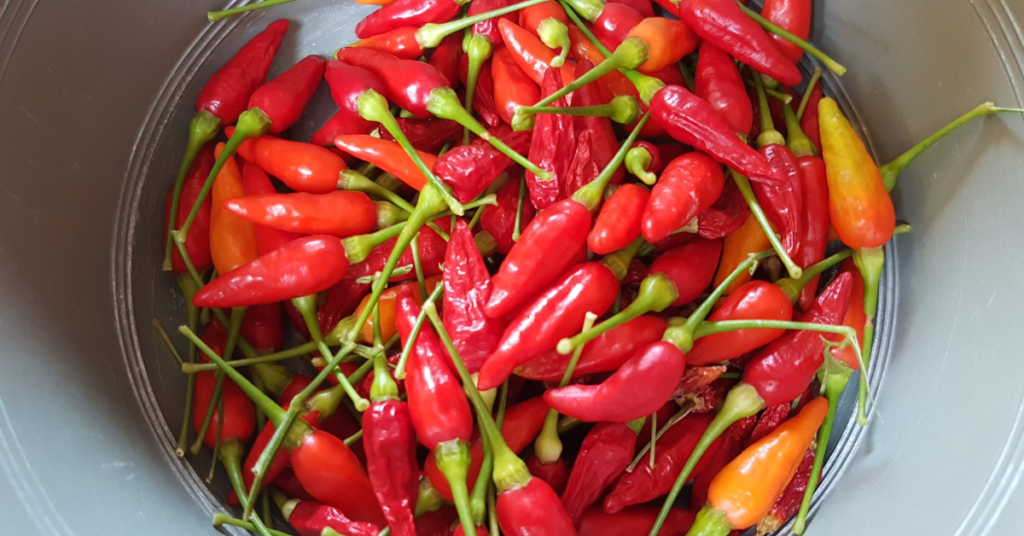
You need chilies to make Thai food! Whether you like them mild or extra spicy, chilies are essential in many Thai dishes. From the classic red curry to a fiery bowl of Som Tam (papaya salad), chilies add a unique heat and flavor that no other ingredient can replicate.
Thai cooking generally demands fresh chili peppers, but you can also use dried chilies. The most common chili peppers in Thai cuisine are bird’s eye chilies, long green chilies, and red jalapeños.
When adding chilies to a dish, always taste test before serving – you don’t want your guests running for the ice cream to cool their palettes!
Final Thoughts for Thai Food Spices
And there you have it – 10 essential ingredients to make a delicious Thai dish. From fragrant spices like lemongrass, star anise, and cumin to fiery chilies and aromatic herbs like basil, these ingredients will give you that authentic Thai flavor in any dish you create. So, get out your wok and start cooking – Thai food awaits!
You May Also Like the Following Articles:
Can you use a wok on an electric stove? Learn the pros and cons.
Learn the right way to clean a mortar and pestle.
Tamari substitutes – a complete guide.

